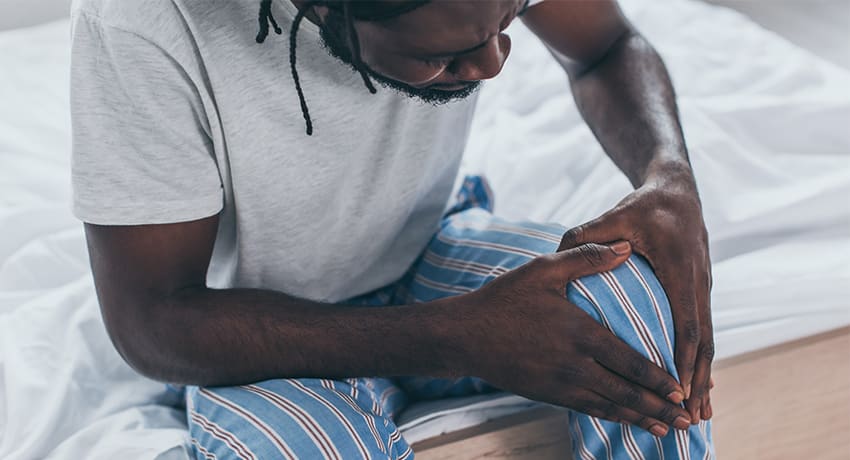
It’s common for inexperienced exercisers to feel soreness after a strenuous workout. When you work out hard, you can expect a little discomfort. However, there is a difference between muscle soreness and pain. An injury can be minor, so it may be overlooked until it gets worse. Bonnie P. Gregory, MD, orthopedic surgeon with UT Physicians, shares her expertise on common workout injuries and when you should see a physician.
“Each person has a different threshold for physical activity, based on factors such as age, health, workout intensity, strength, and overall fitness level,” said Gregory. “Staying within your threshold usually results in soreness and gains; exceeding your threshold often results in pain and injury.”
The difference between soreness and a pulled muscle
Telling the difference can be difficult if you don’t know what to look out for. With muscle soreness, you won’t feel it until a day to two later. With a pulled muscle, however, the pain is usually immediate.
“The pain from a pulled muscle is intense, sharp, and localized to where the injury occurred and can also be associated with swelling, bruising, and difficulty moving the joints nearby,” said Gregory.
Where the injury occurred
Some injuries are more frequent and problematic than others. While they can be attributed to inactivity and improper stretching, other injuries are due to overuse and strain. Shoulder and lower back pain can sometimes be mistaken for injury when it’s just soreness.
Below are some common areas of your body where injuries can occur during a workout or intense physical activity:
- Low back strain – This is the most common injury, resulting from weak muscles in the back due to prolonged inactivity, sitting, or improper lifting techniques.
- Shoulder strain – Shoulder joints have a wide range of motion; repetitive motions such as throwing or swimming can often lead to overuse and rotator cuff injuries.
- Wrist strain – Your wrist is a complex joint that offers a high degree of mobility. Too much weight or repetitive motions can place unintended stress and cause injury.
- Knee pain – Also known as runner’s knee, the pain occurs around the kneecap and you may hear a creaking, popping, or grating sound.
- Ankle sprain – Twisting an ankle can happen anytime. It can occur while walking, running, or just simply losing your footing.
- Pulled groin – This is fairly common and occurs during squats, sprints, or lunges.
“If you think you are injured, look for signs of redness, bruising, or swelling,” said Gregory. “If you see swelling in a focused area, it’s a key indicator that your body is trying to heal or that something more serious is going on.”
Simple treatments for muscle soreness and when you should see a doctor
Simple remedies for soreness include using an ice pack, massages, stretching, and most importantly, rest. Muscle soreness should not last longer than five days. Seek medical attention if the pain doesn’t subside after a week, the injured area feels numb, or you are unable to walk or move your arms or legs. These symptoms could indicate a bigger issue, such as damage to your joints or muscles.
How an orthopedic surgeon or sports medicine doctor can help
While you may see your primary care doctor for these types of injuries, a physician who specializes in sports medicine or orthopedic surgery may be your best option. An expert can help you by starting with an initial pain assessment, identifying factors that may have contributed to your injury, provide recommendations for recovery, and tips for future injury prevention.
“A physical evaluation and imaging tests can help determine the extent of your injury,” said Gregory. “Once determined, there are a number of treatment solutions including physical therapy, medications, and minimally invasive surgery.”
You may resume normal activities with proper treatment and recovery time.
Bonnie P. Gregory, MD, specializes in sports medicine and sees patients at UT Physicians Orthopedics at Ironman Sports Medicine Institute – Sugar Land located at 17520 W. Grand Parkway South, Suite 200, Sugar Land, TX 77479.
She is the team physician for the Houston Dash, Sugar Land Skeeters, University of Houston, North American University (Stafford, Texas), Foster High School, and also participates in the care of athletes at other local high schools.
To schedule an appointment, please call 713-486-1600. UT Physicians is the clinical practice of McGovern Medical School at UTHealth.



